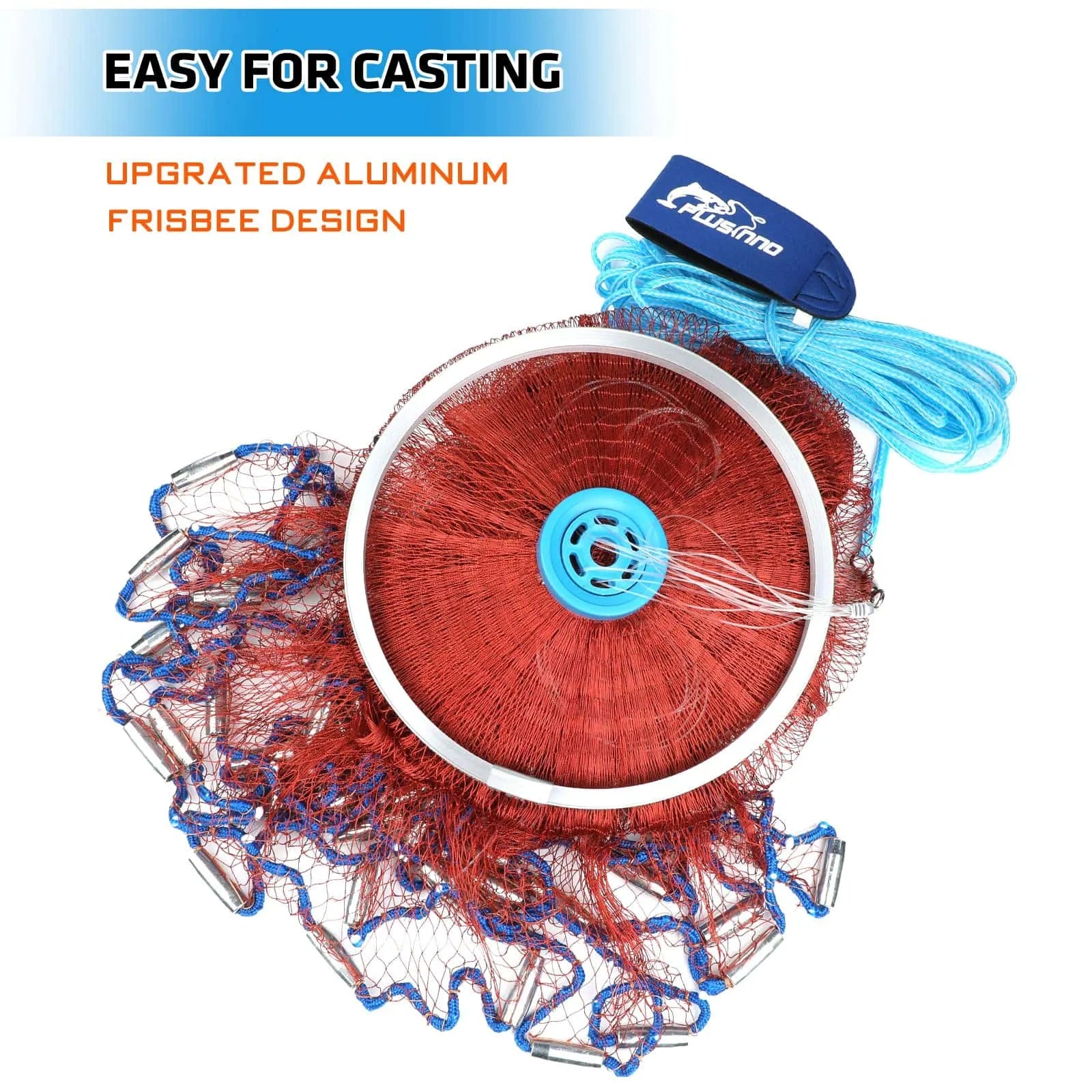Anyway, what is accepted and accepted by people is cast net.
When it comes to fishing, having the right equipment is essential. One of the most important tools for any angler is a cast net. Whether you're fishing in a lake, river, or ocean, a cast net can greatly improve your chances of success. In this article, we will explore the key factors to consider when choosing the best cast net for fishing in any body of water.
1. Mesh Size
One of the first things to consider when selecting a cast net is the mesh size. The mesh size determines the size of the fish that can be caught. If you're targeting smaller fish, such as baitfish, a net with a smaller mesh size is ideal. On the other hand, if you're after larger game fish, a net with a larger mesh size will be more suitable. It's important to choose a mesh size that matches the type of fish you're targeting.
For example, if you're fishing for baitfish like mullet or shad, a cast net with a 1/4-inch mesh size would be appropriate. However, if you're targeting larger fish like redfish or snook, a net with a 1-inch mesh size would be more suitable.
2. Material
The material of the cast net is another important consideration. Cast nets are typically made from either monofilament or nylon. Monofilament nets are known for their durability and strength, making them a popular choice among anglers. Nylon nets, on the other hand, are more lightweight and easier to handle. The choice between monofilament and nylon ultimately depends on your personal preference and fishing style.
For example, if you're fishing in saltwater where the net may come into contact with sharp objects like rocks or oyster beds, a monofilament net would be more suitable due to its durability. On the other hand, if you're fishing in freshwater and prefer a net that is easier to throw and retrieve, a nylon net would be a better choice.
3. Size and Weight
The size and weight of the cast net are also important factors to consider. Cast nets come in a variety of sizes, typically ranging from 4 to 12 feet in diameter. The size of the net you choose will depend on the type of fishing you plan to do and the size of the fish you're targeting.
For example, if you're fishing in a small pond or creek for smaller fish, a smaller net with a diameter of 4 to 6 feet would be sufficient. However, if you're fishing in a larger body of water like a lake or ocean for larger game fish, a larger net with a diameter of 8 to 12 feet would be more appropriate.
In addition to size, the weight of the net is also important to consider. A heavier net may be more difficult to throw and retrieve, especially if you're fishing alone. It's important to choose a net that you can handle comfortably to ensure a successful fishing experience.
4. Price
Lastly, price is always a consideration when choosing any fishing equipment, including cast nets. Cast nets can vary in price depending on factors such as size, material, and brand. It's important to set a budget and choose a net that fits within your price range.
While it may be tempting to opt for a cheaper net, it's important to remember that quality is key. Investing in a higher-quality net may cost more upfront but can save you money in the long run by lasting longer and performing better.
In conclusion, choosing the best cast net for fishing in any body of water requires careful consideration of factors such as mesh size, material, size and weight, and price. By selecting a net that matches your fishing needs and preferences, you can greatly improve your chances of success on your next fishing adventure.
